- Best Price Guaranteed
- Flexible Rescheduling
- Under 2's Go Free
- SEA LIFE, Coral Kingdom
Discover our coral reef species
Coral reefs cover less than 1% of the ocean floor, yet over 25% (that's 1 quarter) of marine species depend on this habitat in some way for survival. Wow! Coral reefs provide such a large fraction of Earth's biodiversity that they have been called 'the rain forests of the sea'!
On your journey to SEA LIFE London Aquarium you and your family will spot a wide arrange of unique coral reef creatures. Keep scrolling below to discover some of the vibrant species you might meet!
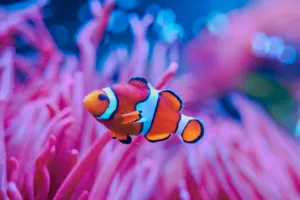
Clownfish
Did you know that Clownfish live in the venomous tentacles of Sea Anemones?
They are one of the only ocean creatures that can do this as they are protected by a layer of slimy mucus on their skin! Clownfish like to live in Sea Anemones so that they are protected from predators and can nibble on leftover food the Sea Anemone catches.
In return, they help keep Sea Anemones and the area around them clean by eating up algae and other reef debris.
If you see a clownfish couple in a Sea Anemone, the larger of the two will be the female, and the smaller the male.
They are called clownfish because of their bright clown colouring and all clownfish are born as boys. Once the females die, the largest male will change sex.
Clownfish Wow Facts!
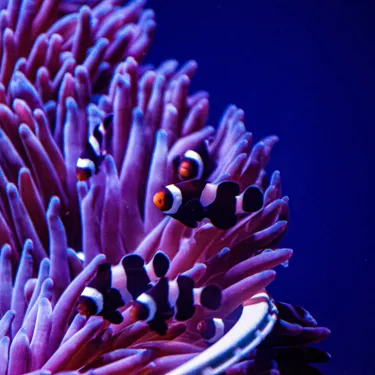
Colourful
Not all Clownfish species are orange in colour. Some are red, brown or even black!
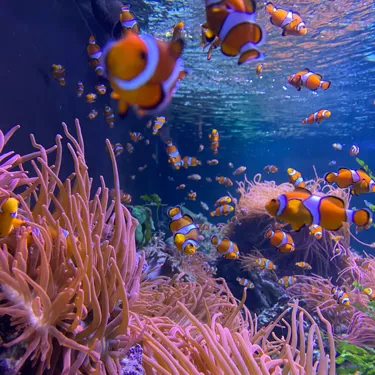
Wow!
All Clownfish are born boys! Some will eventually turn into girls when they are older. If you see two Clownfish on a Sea Anemone, the larger of the two will be the female, the smaller the male.
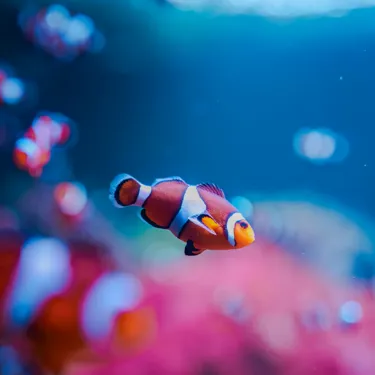
Hungry
They are omnivores, meaning they eat both plants and animals. Their diet consists mainly of algae, zooplankton (tiny animals that live in water) and small crustaceans.
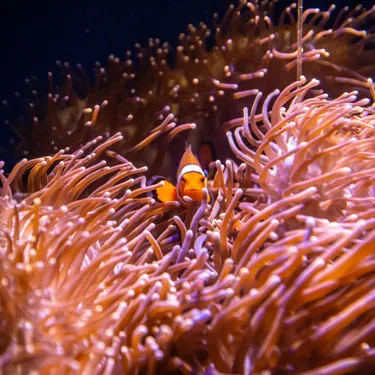
Home
Clownfish make themselves immune to the stings of their home anemone!
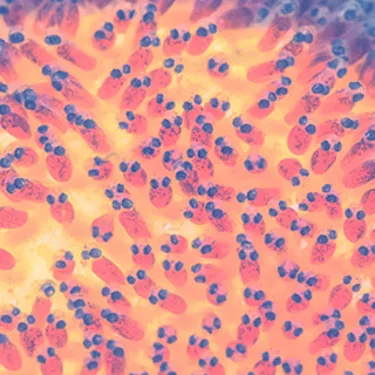
Daddy!
Male Clownfish are very devoted parents. They look after the eggs, fanning them to keep them oxygenated. They will chase away fish much bigger than them and even square up to inquisitive scuba divers!
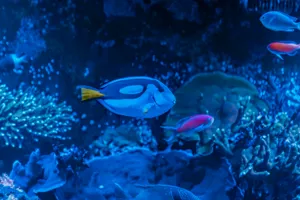
Blue Tang
The familiar and friendly Regal Blue tang is renowned for its distinctive royal blue body and tail. They are also commonly known as Palette surgeonfish and the Hippo tang. Regal Blue tangs can grow up to 20-30 centimetres in length and are typically found amongst coral reefs of the Indo-Pacific Oceans, East Africa, Japan, Samoa, New Caledonia and Australia. Juveniles mostly feed on plankton while the diets of the adult tangs are omnivorous, feeding on plankton and algae.
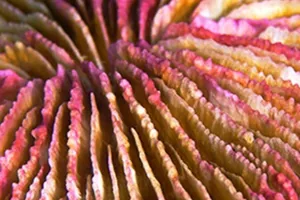
Corals
The Coral itself might look like rock or plant but it is actually a type of animal! From the same family as Jellyfish and Sea Anemones, Corals are made up of millions of individual polyps all growing on top of each other. Each of these polyps lives within a shell but sticks out little stinging tentacles to catch plankton in the current. Coral polyps share their shell with algae which provides them with most of their food using photosynthesis. In exchange the Coral offers the algae a safe house so they both get a good deal!
When Corals are stressed by pollution, temperature or acidity changes, they spit out the algae from their shells. This is known as Coral bleaching as it is the algae which gives them colour and without it they turn white. Coral cannot survive for long without this algae.
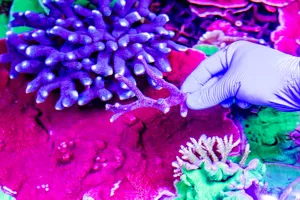
Coral Rehoming
Championing coral protection through education and conservation efforts, SEA LIFE London Aquarium is an official partner of UK Border Force and Heathrow Airport for coral quarantine, and the seizure and rehousing of corals that don’t have the correct paperwork by offering them a home at the attraction.
As part of SEA LIFE’s Breed, Rescue, Protect programme, any permanently confiscated coral is placed into the quarantine area for proper care and nurturing.
Discover more about our conservation
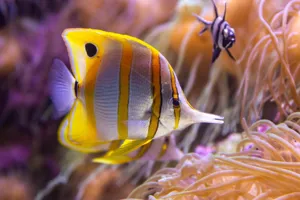
Copperband Butterflyfish
The copperband butterflyfish has a few distinct features! It's long snout allows it to hunt tiny invertebrates and pull them from small spaces. The black spot looks like a fake eye and tricks predators into attacking it's fin instead of its head. This gives the fish a better chance of escaping!
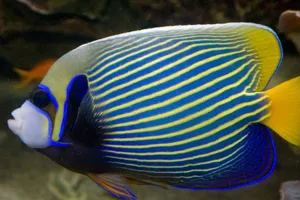
Emperor Angelfish
Angelfishes of the genus Pomacanthus are known for their dramatic colour changes with growth. The species occurs on coral reefs, however juveniles are often seen under ledges near cleaner shrimp.
The black stripe over an Emperor Angelfish's eye helps to disguise them. Predators often look for eyes to help them identify prey.
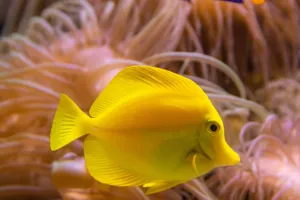
Yellow Tang
Tang fish are also known as Surgeonfish because of the scapel-like spines on either side of their body at the base of their tail. They use these in self defence. You'll see many different colourful species of Tang in Coral Kingdom including this species, the Yellow Tang!
Some more creatures you'll meet...
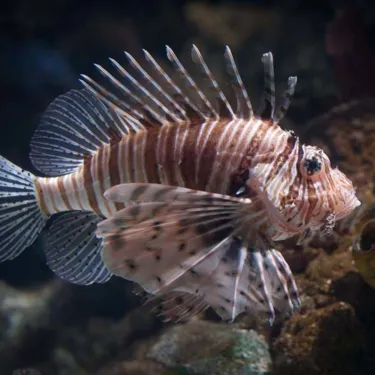
Lionfish
Lionfish are covered in venomous spines and therefore have few predators! They are one of the most venomous fish in the sea!
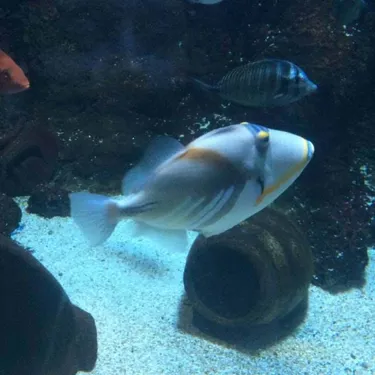
Triggerfish
When chased by a predator Triggerfish will hide in a rock crevice and flick out a special spine on their back in order to lock themselves into position. This is how they got their name!
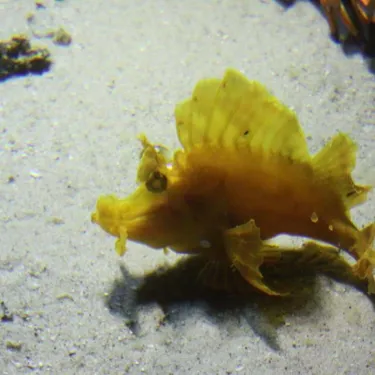
Leaf Scorpionfish
You'll have to look carefully to spot this guy! Leafy Scorpionfish are ambush predators who blend in with their surroundings and pounce on unsuspecting fish and crustaceans.
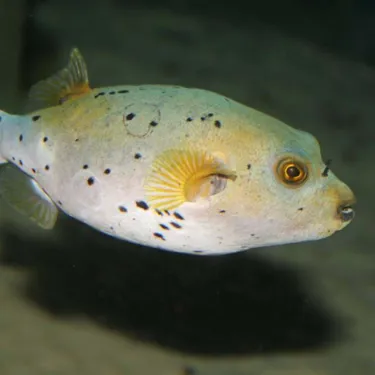
Pufferfish
These fish can famously suck water in to massively inflate the size of their body to scare off predators. It isn't very good for them as it squashes their internal organs so you should never try to scare a Pufferfish if you see one in the wild.
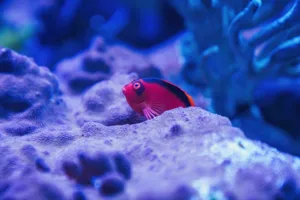
Adapt to survive!
Coral Reefs are packed with creatures, all living together in a small space so things get very competitive! Reef inhabitants have to have some nifty tricks up their sleeve to ensure that they catch enough food and evade their predators.

Standard Ticket
- Entry at your chosen 15-minute time slot
- Discover species from around the world in 14 themed zones and interact with them at our public feeding, diving displays and touch pools
- Animal Crossing: New Horizons event is included with all SEA LIFE London entry tickets - just book any day from 30 June - 27 July
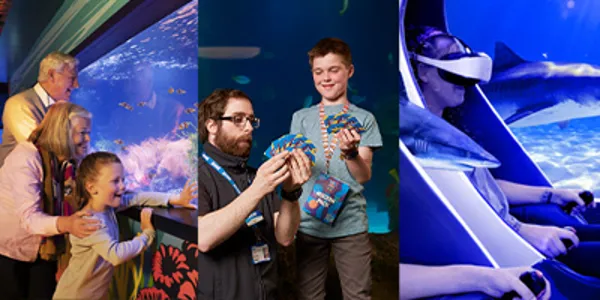
Deluxe Package
- Arrive at any time on the day of your choice
- Includes an immersive VR experience: Dive into the ocean's depths with this cutting-edge virtual reality adventure
- Plus an exclusive mission pack or guidebook
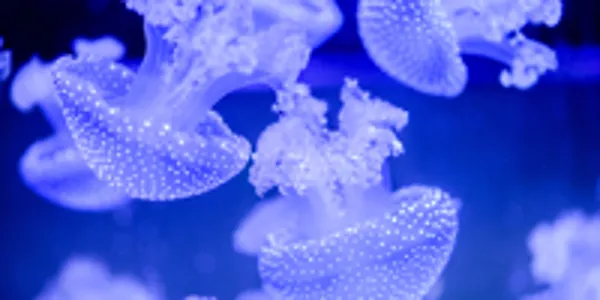
Anytime Entry Ticket
- Enjoy the freedom to arrive at any time on the day of your choice - no rush, just adventure at your own pace!
- Animal Crossing: New Horizons event is included with all SEA LIFE London entry tickets - just book any day from 30 June - 27 July